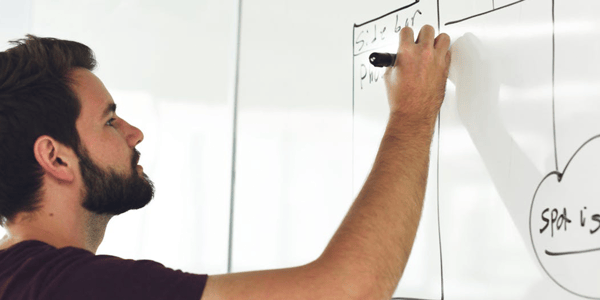
Let’s set the scene: You’re the innovation manager for your company or you’re an entrepreneur.
You’ve heavily invested both time and money into securing your intellectual property (IP). Your board or a potential investor wants a clear and concise status report on your IP. What do you tell them? Hopefully, your IP advisor has taught you a few things along the way, but if you’re a bit lost, here’s a helpful guide on how to include an IP status report in your board meeting or pitch.
Patents
Firstly, when your patent is pending, it is only a patent application. When your patent application is granted, then it becomes a patent. Once your patent application is granted, you can then enforce your patent. Whilst it is pending, you can label ‘Patent Pending’ or similar on your products and marketing. Once granted, you can label ‘Patented’ on your products and marketing. If you haven’t filed any patent application, be careful what you disclose in your pitch. Don’t give away how your ideas work.
- Provisional patent application - At this stage, you have claimed your priority date and you are free to disclose your invention to others. Anything not disclosed in your provisional specification should be kept confidential. Noone has examined your patent application, and it still needs to enter into each country you want protection in. You are a long way from home.
- National Phase/Complete patent application - You’re on your way. You’ve either filed a complete patent application or national phase patent application in your chosen countries and it will soon be examined. Typically, it takes one to three years to go through examination. It is during examination that the scope of the protection of your patent application will be defined.
- PCT application - An intermediate step between your provisional patent application and your national phase application is a PCT (Patent Cooperation Treaty) application that you file with the World Intellectual Property Office (WIPO). Typically, the process of filing a PCT application is used to delay entry into each country by around 18 months. The PCT office performs a search and gives you a written opinion regarding the patentability of the invention. This is optionally followed by examination. The PCT stage is also good opportunity for you to get a preliminary feel for the strength of your patent—something investors might want to see.
A PCT application does not itself result in the grant of a patent, since there is no such thing as an ’international patent‘. The grant of patent is up to each country (or region) you enter into after the PCT stage. Once you have finished the PCT stage, you need to enter the national phase patent applications in the chosen countries. - Granted patent - You've made it! You have entered your patent application into a country, and it has been examined and accepted by the country’s IP office. No one has opposed your patent application and it has become granted.
Trade marks
If you have taken steps to register your trade mark with a country’s IP office, it is either pending registration or is a registered trade mark. If it is registered, you can use the ® symbol. If your trade mark is not registered, you can use the TM symbol.
Registering a company name does not mean that you are free to use your company name as a trade mark—the two types of registrations give you different rights and have different requirements for registration.
Like other registered IP, you need to register your trade mark in each country in which you want protection. You can do this by filing a trade mark application in each country after your first filing (which is typically in your home country) or you can go via WIPO. WIPO will examine your application and, if approved, will send you a certificate of your international registration and notify the IP offices in all the territories in which you desire protection. The IP offices of the each territory will then make a decision on whether to register your trade mark in their country or not.
- Copyright - You automatically have copyright in all of your work. Copyright is free and inherent in most countries. All authors/owners of creative work can label their work with the © symbol. Ideally, you will be able to tell your board that you own all the copyright and that you have agreements in place with any third party designers.
- Designs - Design protection is like formalised copyright for products. It protects the visual appearance of your product, and copying of your product does not need to be proved for infringement. You have design protection once your design is registered in your country of interest. You can enforce your design registration once it is registered. Prior to registration, your design application is pending. Like patents and trade marks, you need to register your design in each country in which you want protection.
- Trade Secrets - In order for a trade secret to remain protectable, the trade secret must not be known to the public and efforts must be taken to maintain its secrecy. Prior to any pitch or outside disclosure, you should determine how your IP assets and information are best protected via a trade secret.
At The Icehouse, we like to partner with experts who provide value for the business that we support. AJ Park fall squarely into this category. They've written this piece to help start-ups or owner managers tackle some common (but easily overcome) problems, and get their businesses moving in the right direction.




